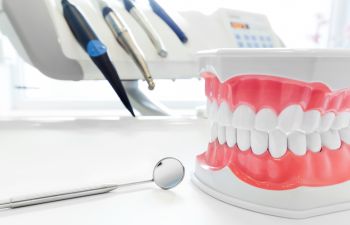7. Recommendations for teeth whitening with LED light.
1. Dental cleaning and whitening
2. Whitening performed by a specialist dentist
3. Quality bleaching gel and guarantee
4. Avoid coloring in foods and beverages
5. No smoking after a teeth whitening
6. Toothpaste and colutorios without color
7. Dental hygiene for the best result
Recommendations for teeth whitening with LED light.
If you are thinking of lightening or whitening your teeth,
these recommendations for teeth whitening with LED light will
help you get the best results for longer.
This type of treatment is a Dental whitening in
clinic of 3 sessions . It is also known as:
- LED or laser whitening .
- Teeth whitening with lamp .
- Teeth whitening by photo activation
- Teeth whitening with cold light
Dentists will make a preliminary and exhaustive diagnosis to check that there are no cavities or inconveniences of performing a dental whitening on the patient.
Check
the teeth whitening reviews in
our patient testimonials section.
Get
the best results of a LED tooth whitening following our treatment
recommendations:
1. Dental cleaning and whitening
It
is recommended that your dentist perform a dental cleaning before
bleaching.
This
will eliminate an important part of the discolorations
and bacterial plaque.
Your
dentist will check your teeth and gums to
see if it is appropriate to perform tooth whitening with LED light .
2. Whitening performed by a specialist dentist
The
whitening treatment must be carried out by dentists specialized in aesthetic dental
treatments .
It
is very important to protect the
mucous membranes of your mouth with a gingival protector. We
must avoid that it can produce burns due to the peroxide of the bleaching
gel. Your dentist will place an open mouth so that the mucous membranes
are completely isolated.
During
the three sessions of teeth
whitening in our clinic you have to protect your eyes that should be
isolated by means of protective glasses for LED teeth whitening.
3. Quality bleaching gel and guarantee
As
it is announced by the COEM - Official College of Stomatologists of
Madrid- , there may be risks and side
effects of whitening if
it is not done by a professional with the right product and the right dental
equipment.
If
the treatment is not done correctly, it can cause gum problems or sensitivity after teeth whitening .
The whitening gels that are applied on
the outside of the tooth are based on the application of two types of chemical
agents: hydrogen peroxide or carbamide peroxide .
Teeth whitening products with cold light use a
concentration ≤ 0.1% hydrogen peroxide can be used in domestic use.
In concentrations>
0.1%, only a dentist can apply them since using these products in an
inappropriate way can produce side
effects of tooth whitening, such as burns and excessive
sensitivity.
The whitening system we
perform in our dental clinic is the Norblanc Office
bleaching gel from Normon Laboratories . Laboratory
of recognized prestige among dental whitening products.
The
most practical accelerator is a LED
tooth whitening lamp that emits a blue light for the activation
of hydrogen peroxide and accelerates the entire bleaching process.
4. Avoid coloring in foods and beverages
During
the time that whitening lasts we must follow a white diet . Avoid taking any kind of natural coloring (tomatoes,
lettuce, colored fruit, chocolate, coffee or tea) or artificial colors (sweetened
drinks with color like Coca-Cola or fanta).
The
days in which the teeth whitening
sessions are performed , the enamel pores open up and are
more receptive to being colored by the coloring of the foods we eat each day.
If you are doing a teethwhitening you should not take food and drinks that contain dyes of any kind.
The white diet
or not being able to smoke during tooth whitening are the most common reasons
why some of our patients decide not to undergo aesthetic treatment.
5. No smoking after a teeth whitening
If
you are a smoker and want to perform a teeth whitening you have to take into
account that you will not be able
to smoke while the treatment lasts.
Tobacco,
in addition to seriously harming health, dyes yellow teeth by tobacco , making them
look darker.
During
the time of whitening your teeth are more prone to dying, therefore if you
smoke during the treatment it will be very harmful.
Some tobacco stains on the teeth can be
removed with dental polishes. However, sometimes it is necessary to
perform an internal tooth whitening in addition to other preservation treatments
for the bad of tobacco smoke for our teeth and gums.
6. Toothpaste and colutorios without color
You
should not use colored mouthwash or
dentifrices during tooth whitening because they contain
artificial extracts and dyes. In terms of tooth sensitivity, it is normal
that the first days after a whitening session feel greater sensitivity in the
teeth.
One
of our LED tooth whitening
recommendations is to use special toothpastes
or toothpastes for tooth sensitivity during tooth
whitening.
This
toothpaste should not have any color, because during the first days after each
whitening session the tooth is more susceptible to acquire the colors that come
into contact with its surface.
7. Dental hygiene for the best results
To
maintain white teeth we
must have good dental hygiene and proper tooth brushing technique after each
meal. Flosses at least once a day to eliminate food debris.
Keep
in mind that teeth whitening
results vary from person to person and depend on the shade of the
teeth before whitening.
The effects of tooth whitening can
last from 2 to 3 years depending on the habits of each patient.
If
you follow our recommendations of
LED tooth whitening LED during the results will be more durable.
The
eating and health habits of certain foods, drinks with dye, tobacco and dental hygiene will be key in terms of
the duration of the treatment effect.
By: Dr. Francisco Ferrer
